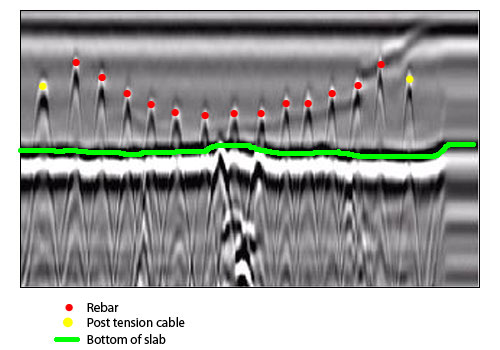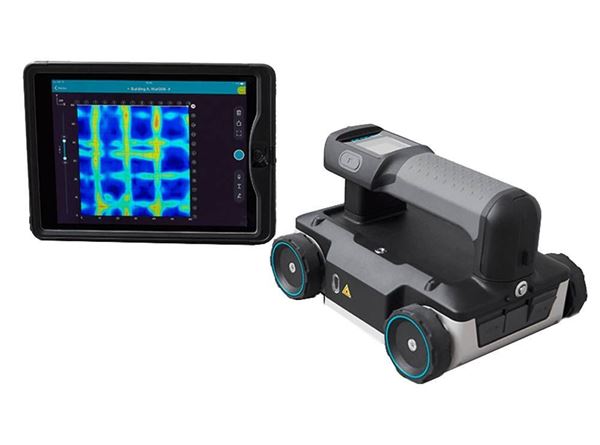Enhancing Task Planning and Execution With Advanced Concrete Scanning Techniques
In the realm of task planning and implementation, precision and insight are vital aspects that can make the difference in between success and troubles. Advanced concrete scanning strategies have actually emerged as an advanced device established to boost the criteria of task management within the construction industry.
Benefits of Advanced Concrete Scanning Techniques

Improved Accuracy in Project Assessments
Enhancing project assessments via innovative concrete scanning strategies significantly boosts the accuracy and integrity of construction assessments. By employing cutting-edge scanning technologies such as ground-penetrating radar (GPR) and 3D imaging, task groups can now obtain detailed understandings into the condition of concrete frameworks, determining potential imperfections or weak points that may not be visible to the nude eye. This improved level of precision in job assessments makes it possible for building professionals to make even more educated choices relating to repair work and upkeep methods, resulting in improved general project end results.
Furthermore, the increased precision in project analyses accomplished through sophisticated concrete scanning techniques helps in minimizing the danger of unpredicted issues throughout the building stage. By proactively detecting covert anomalies within concrete frameworks, such as rebar corrosion or voids, project groups can address these problems early on, staying clear of pricey hold-ups and revamp later in the job lifecycle. Eventually, the enhanced precision in job analyses helped with by sophisticated concrete scanning techniques adds to greater effectiveness, cost-effectiveness, and quality in building tasks.
Very Early Identification of Architectural Obstacles
Very early detection of architectural difficulties plays an important duty in guaranteeing the honesty and safety of concrete frameworks throughout the building and construction process. Identifying potential problems at a beginning enables prompt treatment, preventing costly rework, schedule delays, and security risks. Advanced concrete scanning techniques, such as ground-penetrating radar (GPR) and 3D imaging, make it possible for job groups to reveal covert defects, voids, reinforcement layout disparities, and other anomalies that could jeopardize the structure's security.
By applying these techniques throughout the planning and execution phases, construction specialists can proactively deal with structural obstacles prior to they intensify into significant issues. As an example, finding insufficient concrete cover over reinforcement bars early on can prevent rust and structural weakening in the future - RainierGPR Service Areas. Moreover, recognizing variants in concrete thickness or thickness can help enhance material use and make sure consistent strength homes throughout the structure

Eventually, early recognition of structural challenges via advanced concrete scanning not just improves the total quality and sturdiness of the building and construction but also adds to a safer built atmosphere for passengers and customers.
Improved Security Measures in Construction
The application of durable safety and security methods is crucial in the construction sector to alleviate dangers and guard the well-being of workers and stakeholders. To boost security measures, building and construction firms are increasingly embracing technological improvements such as wearable tools that monitor workers' vital signs and discover prospective health issues in real-time. By focusing on safety and security through the incorporation of advanced modern technologies and detailed training programs, building tasks can substantially lower accidents and develop a safe functioning environment for all entailed.
Streamlining Task Monitoring Processes
To optimize operational efficiency and make sure job success in the building and construction industry, a focus on simplifying project monitoring procedures is essential. By carrying out effective job administration processes, building and construction tasks can decrease delays, decrease costs, and boost overall productivity. One vital element of simplifying task management is using sophisticated modern technologies such as Structure Info Modeling (BIM) software application, which enables real-time partnership, clash discovery, and accurate project scheduling. Additionally, the adoption of cloud-based task management systems permits smooth communication amongst group members, instantaneous access to project data, and the capacity to track progression in real-time.

Conclusion
Finally, the use of innovative concrete scanning strategies offers many advantages for task planning and execution. These methods offer improved precision in task analyses, very early recognition of architectural difficulties, enhanced security steps in building, and streamlined project management processes. Including these approaches right into task process can eventually result in much more effective and effective results in building projects.
Ultimately, the boosted precision in job assessments facilitated by innovative concrete scanning methods contributes to greater performance, cost-effectiveness, and high quality in building projects. RainierGPR Service Areas.
To maximize operational efficiency and make sure project success in the construction sector, a focus on improving job administration processes is vital. By applying effective project management processes, building tasks can decrease hold-ups, lower prices, and improve general productivity. By streamlining job management procedures with modern technology combination, clear interaction, and data-driven techniques, building and construction projects can achieve greater Get More Information efficiency, cost-effectiveness, and effective outcomes.
These methods supply improved accuracy in job analyses, early identification of architectural challenges, enhanced security actions in building, and structured task management processes.